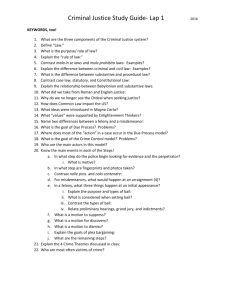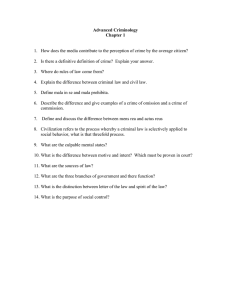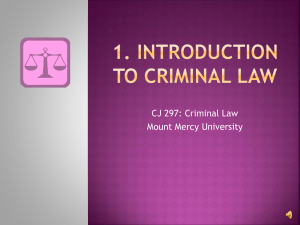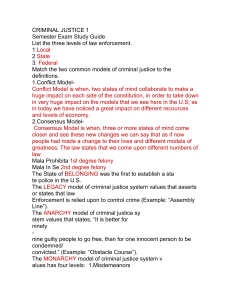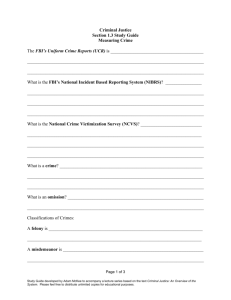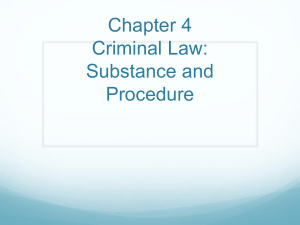Study Guide
advertisement
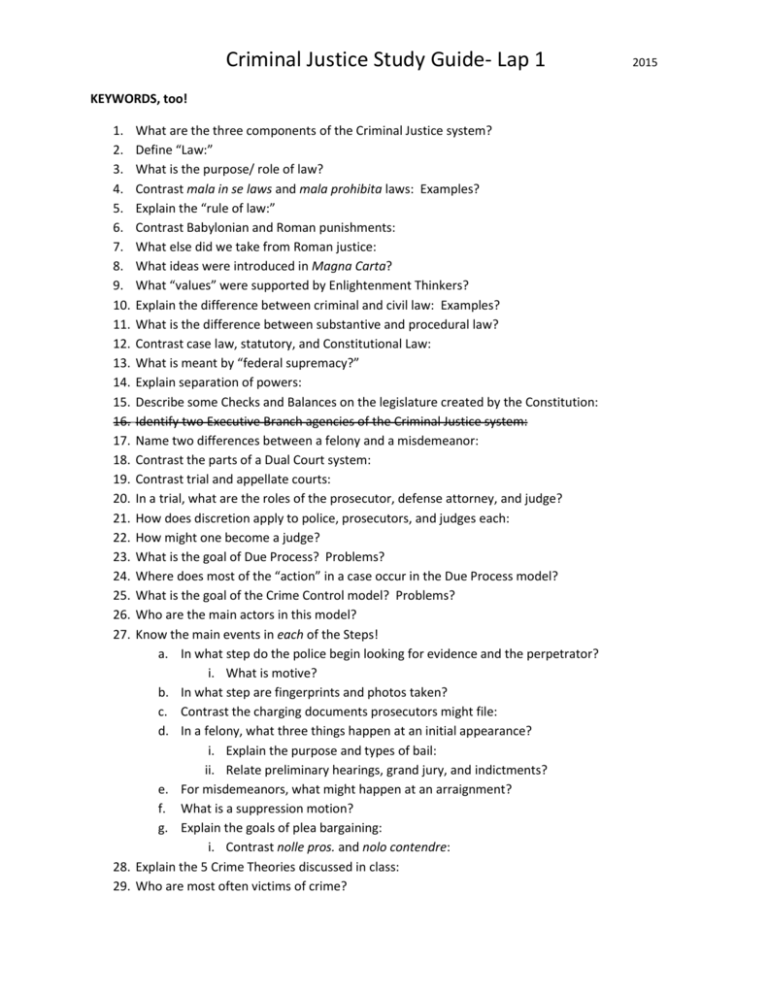
Criminal Justice Study Guide- Lap 1 KEYWORDS, too! 1. 2. 3. 4. 5. 6. 7. 8. 9. 10. 11. 12. 13. 14. 15. 16. 17. 18. 19. 20. 21. 22. 23. 24. 25. 26. 27. What are the three components of the Criminal Justice system? Define “Law:” What is the purpose/ role of law? Contrast mala in se laws and mala prohibita laws: Examples? Explain the “rule of law:” Contrast Babylonian and Roman punishments: What else did we take from Roman justice: What ideas were introduced in Magna Carta? What “values” were supported by Enlightenment Thinkers? Explain the difference between criminal and civil law: Examples? What is the difference between substantive and procedural law? Contrast case law, statutory, and Constitutional Law: What is meant by “federal supremacy?” Explain separation of powers: Describe some Checks and Balances on the legislature created by the Constitution: Identify two Executive Branch agencies of the Criminal Justice system: Name two differences between a felony and a misdemeanor: Contrast the parts of a Dual Court system: Contrast trial and appellate courts: In a trial, what are the roles of the prosecutor, defense attorney, and judge? How does discretion apply to police, prosecutors, and judges each: How might one become a judge? What is the goal of Due Process? Problems? Where does most of the “action” in a case occur in the Due Process model? What is the goal of the Crime Control model? Problems? Who are the main actors in this model? Know the main events in each of the Steps! a. In what step do the police begin looking for evidence and the perpetrator? i. What is motive? b. In what step are fingerprints and photos taken? c. Contrast the charging documents prosecutors might file: d. In a felony, what three things happen at an initial appearance? i. Explain the purpose and types of bail: ii. Relate preliminary hearings, grand jury, and indictments? e. For misdemeanors, what might happen at an arraignment? f. What is a suppression motion? g. Explain the goals of plea bargaining: i. Contrast nolle pros. and nolo contendre: 28. Explain the 5 Crime Theories discussed in class: 29. Who are most often victims of crime? 2015 Criminal Justice Study Guide- Lap 1 TERMS: CHECK THESE!! Adjudication: appellate courts: bail: bench trial booking: case law: Clearance rate: Common Law: Constitutional Law: criminal law: Crime Control model: civil law: defendant: discretion: Dual Court system: Due Process Model: Felony: grand jury: indictment: Initial appearance: Magna Carta: mala in se laws : mala prohibita : misdemeanor: motive: nolle pros. nolo contendre: plea bargain preliminary hearings: probable cause: procedural law statutory law: substantive law: suppression motion: trial courts: warrant: 2015
